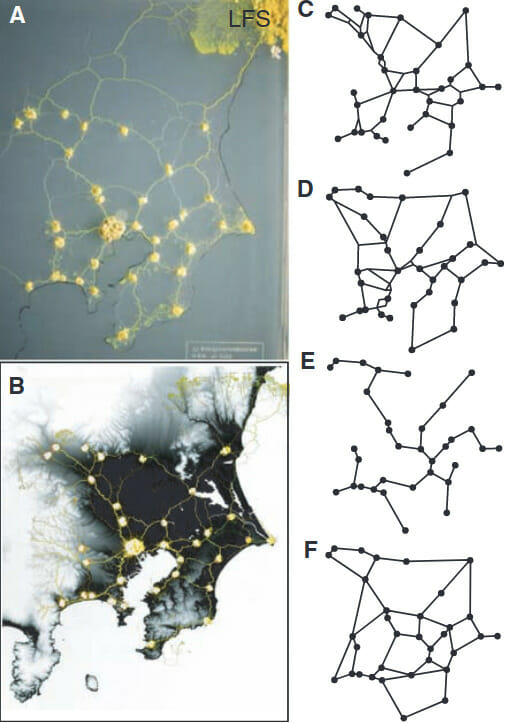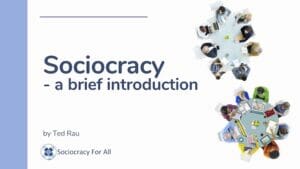
Slime mold intelligence: You can learn some secrets of self-organizing from this ultimate innovator
By Leila Tite & Ahmed Avais
Secrets of self-organizing
Open source software communities can learn a lot from the intelligence of the humble slime mold by following its example in terms of its ability to adapt and grow. Unlike most other organisms, it does not rely on a central nervous system to control its body functions. For instance, it’s able to solve puzzles, make decisions, and have a smooth flow of information without any help from a brain. Scientists are fascinated by the abilities of this collection of single cell organisms and how it can self-organize and self-govern like humans.

For example, in an experiment run in Japan, researchers placed food particles to mimic different parts of Tokyo. The slime mold formed pathways to these food particles in a network map that matched the complex engineering of the Tokyo underground subway system. This was accomplished in less than 26 hours! Then compare this feat to the decades-long process it would take for an actual engineer to design the same subway system. Slime mold may not be good at staying put, but it sure have one thing going for it – it doesn’t get stuck!
Shared values, different needs from a slime mold intelligence perspective.
While the slime mold is looking to survive, open source software is not so different in shared values. And in fact, open source software development resembles an organic outgrowth like the slime mold. We may be programming that way, seeking, learning, and developing with simple rules. Yet, that’s not how we make decisions in open source projects. Which is a lost opportunity.
However, the difference between open source software and other forms of software lies in the community.
What is open source software?
Open source software is code that is designed to be publicly accessible—anyone can see, modify, and distribute the code as they see fit. Open source software is developed in a decentralized and collaborative way, relying on peer review and community production.
Cathedral and the Bazaar, revisited
The famous essay by Eric Raymond, “Cathedral and the Bazaar” is worth a revisit with the lens of the slime mold intelligence. The Cathedral and the Bazaar: Musings on Linux and Open Source by an Accidental Revolutionary (abbreviated CatB) is an essay, and later a book, by Eric S. Raymond on software engineering methods, based on his observations of the Linux kernel development process and his experiences managing an open source project, fetchmail. It examines the struggle between top-down and bottom-up design.
So, what would look familiar to the patterns of the slime mold? A cathedral model where only a few make decisions and are in the know? Or the bazaar of continuous emergence and trading? And why does it matter? Hence, for those of us in the software industry, Linux with the bazaar approach has literally eaten up the world (having become the primary operating system for servers across the world). In this case, its impact has moved the human cause forward including commercial endeavors. A feat that has never been achieved by a cathedral model.
Sensei Slime Mold says, “Make decisions the same way you make amazing software!”
Within a self-organizing system, no one person is in charge. Yet, there are simple rules that work for everyone. Sociocracy is thus a governance method that provides a simple set of rules which allow an organization to harness the collective intelligence of its members. For example, imagine this is a circular hierarchy, holding hands together, and signaling each other like the slime mold. One of the most powerful ideas is that there’s a circular hierarchy and decisions are made by consent. Consent is different from consensus where we work with a range of tolerance versus taking everyone along. And in fact, we find that a consensus based approach will make any group extremely conservative (not trying anything and getting stuck.)
And this is the way, especially, if people are being asked to contribute their valuable time without financial compensation. Another great idea is that Sociocracy puts power in the hands of those closest to the problem. This can be a great way to run an organization without creating a bunch of bureaucracy or waiting for decisions from on high before you’re allowed to attempt anything.
It has to be something that they deeply care about. If it’s something they’re passionate about, then it’ll be much easier for them to put in the extra effort. Or as Eric Raymod codifies in his essay: “to solve an interesting problem, start by finding an interesting problem that is interesting to you.” How your voice is included and how you include other voices, is the magic that we want to inspire in you. Imagine looking forward to decision making sessions and meetings – and working as a collective to truly achieve what might look like the realm of dreams.
A deeper dive into sociocracy
We invite you to take a deeper dive into Sociocracy with the following resources and make it work for your open source project:
Free and Open-Source project involvement survey
In open source and looking to run your organization sociocratically? Please fill out the survey below:




Leave a Reply
You must be logged in to post a comment.